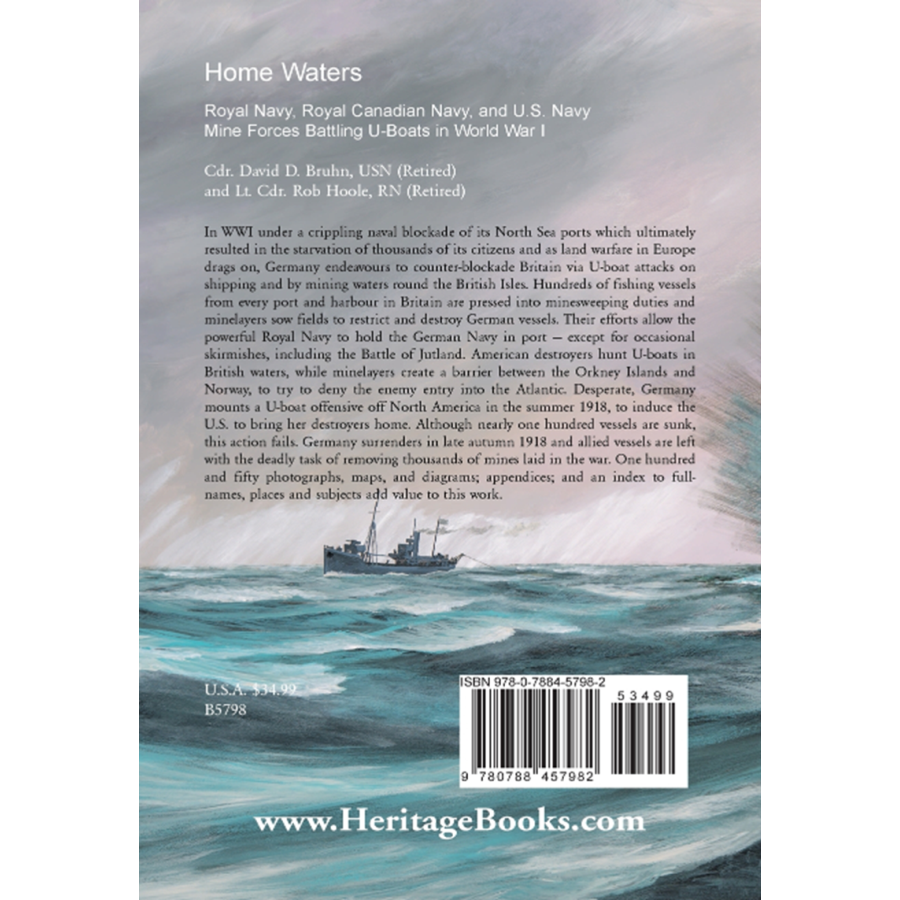Home Waters: Royal Navy, Royal Canadian Navy, and U.S. Navy Mine Forces Battling U-Boats in World War I
Couldn't load pickup availability
In World War I, under a crippling naval blockade of its North Sea ports which ultimately resulted in the starvation of thousands of its citizens, as land warfare in Europe drags on, Germany endeavoured to counter-blockade Britain via U-boat attacks on shipping and by mining waters round the British Isles. Hundreds of fishing vessels from every port and harbour in Britain were pressed into minesweeping duties, sowing minefields to restrict and destroy German vessels. Their efforts allowed the powerful Royal Navy to hold the German Navy in port — except for occasional skirmishes, including the Battle of Jutland. American destroyers hunted U-boats in British waters, while minelayers created a barrier between the Orkney Islands and Norway, to deny the enemy entry into the Atlantic. Desperate, Germany mounted a U-boat offensive off North America in the summer 1918, to induce the United States to bring her destroyers home. Although nearly one hundred vessels are sunk, this action failed. Germany surrendered in late autumn 1918 and allied vessels were left with the deadly task of removing thousands of mines laid in the war. One hundred and fifty photographs, maps, and diagrams; appendices; and an index to full-names, places and subjects add value to this work.
Cdr. David D. Bruhn, USN (retired) and Lt. Cdr. Rob Hoole, RN (retired)
2018, 6" x 9", paper, index, 428 pp.
ISBN: 9780788457982
101-B5798

